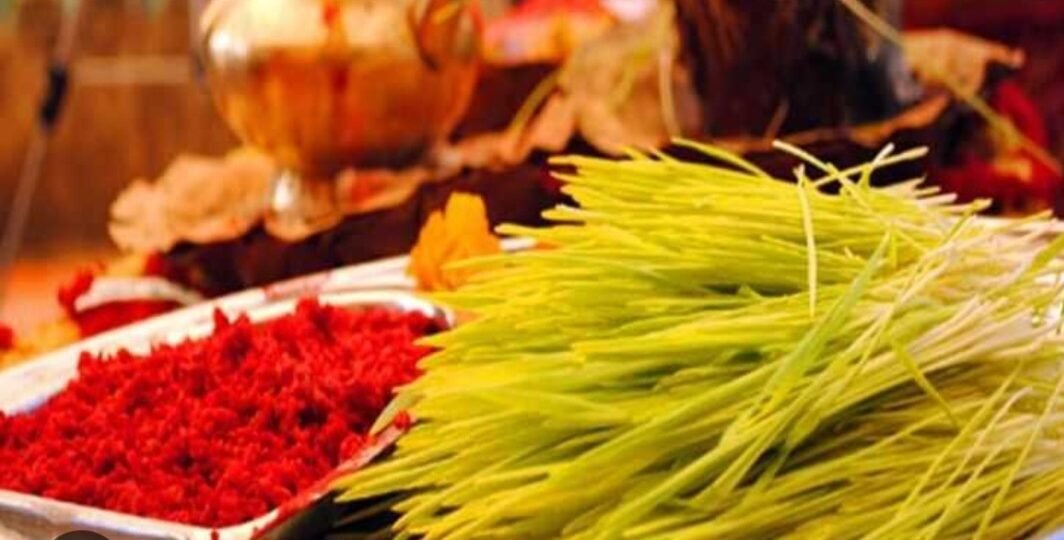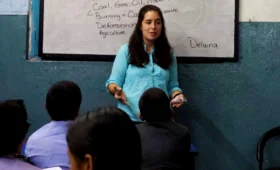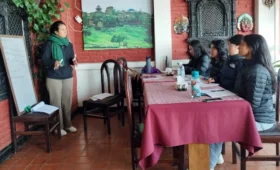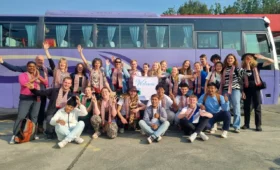Nepal, a diverse Himalayan nation, is renowned for its unique culture, lively festivals, and the stunning beauty of the majestic Himalayas. Despite its small size, this enchanting country is home to a vibrant tapestry of cultures and ethnicities, each with its own rich traditions and colorful celebrations.
Many of Nepal’s festivals hold deep religious and spiritual significance, while others are inspired by ancient mythology and epic literature. These vibrant cultural events are a testament to the country’s heritage and diverse ethnic backgrounds.
Dashain and Tihar: National Festivals of Nepal
Despite the diversity of beliefs and cultures, Nepalese people come together to commemorate significant national festivals like Dashain and Tihar, which hold great importance throughout the country. Dashain, the biggest festival in Nepal, celebrates the victory of good over evil, while Tihar, also known as the festival of lights, honors the relationship between humans and animals.
Local and Ethnic Festivals in Nepal
In addition to national festivals, Nepal’s ancient Valley towns are home to unique festivities like Bisket Jatra and Rato Machchhendranath Jatra, deeply rooted in local traditions. Certain celebrations like Chat are exclusively observed by specific ethnic communities, showcasing the rich cultural mosaic of Nepal.
Nepal offer a unique opportunity for travelers and locals alike to immerse themselves in the country’s rich tapestry of traditions and customs. These vibrant celebrations are a window into Nepal’s ancient heritage and diverse cultural landscape.
From religious rituals to colorful processions and traditional dances, Nepal’s festivals are a feast for the senses. Whether you’re witnessing the grandeur of Dashain celebrations or the mesmerizing charm of local festivities, Nepal’s cultural events are a must-experience for anyone seeking a deeper understanding of this enchanting Himalayan nation.
Bisket Jatra ( March- April)
The Bisket Jatra Chariot rally in Bhaktapur is a highly anticipated event that offers a wonderful opportunity for celebration. Also known as the Nepal New Year Festival, the Bisket Jatra takes place in mid-April, marking the beginning of the Nepali Baisakh month and the Nepali New Year. This festival is renowned for its captivating nature and attracts visitors from all corners of the globe. The Nepali New Year is observed during the Baisakh month of the Nepali lunar calendar, precisely in the middle of the April month according to the Gregorian calendar. It serves as a perfect time to set new goals and resolutions for the upcoming year.
Buddha Jayanti (May- June)
Nepal, being the birthplace of Lord Buddha, holds great significance and reverence for the Nepali people, especially the Buddhist community across the nation. The celebration of Buddha Jayanti marks the auspicious occasion of Gautam Buddha’s birth. Siddhartha Gautam, also known as Gautam Buddha, was born in Kapilvastu, Nepal, around 543 BC. This day holds immense sanctity in Buddhist society and is observed on the full moon day of the month Baisakh, which falls between April and May in the Gregorian calendar. The full moon of Baisakh holds exceptional importance as it commemorates the birth of Buddha, as well as the day he attained enlightenment and Nirvana. This triple celebration makes Buddha Purnima a significant and meaningful festival. Apart from the Kathmandu Valley, Lumbini, the birthplace of Buddha, and Namo Buddha are prominent destinations to visit during Buddha Jayanti. Within the Kathmandu Valley, Swoyambhunath and Buddhanath are major attractions to explore during this auspicious occasion.
Gaijatra (August- September)
Gai Jatra is annually observed in August/September according to the Solar calendar and the Nepali month of Bhadra. This renowned celebration in Nepal is widely known for its abundance of humor, parody, satire, jokes, and elements of sorrow. It is commemorated in various locations including Kathmandu, Bhaktapur, Patan, and other parts of the country. The Newar communities, in particular, hold Gai Jatra in high regard throughout Nepal. They participate in this festival to honor their deceased family members from the previous year, organizing a procession led by a cow. In urban areas where cows are not available, children dress up and adorn themselves as cows as a substitute.
Indra Jatra (August -September)
The celebration known as Indra Jatra, lasting for eight days, takes place in September and holds great significance for the Newari people of the Kathmandu Valley. This revered celebration, which is observed by both Buddhists and Hindus, is named after Lord Indra, the God of Rain and the King of Heaven. The festivities commence with the raising of a wooden post made of pine at Basantapur Square, situated in front of the historic Hanuman Dhoka Palace. A multitude of individuals gather at Basantapur Square to partake in the pole-raising ceremony. Additionally, a grand parade featuring the chariot of Kumari, the Living Goddess, traverses the main thoroughfares of Kathmandu. Each evening, masked artists known as Lakhay engage in lively performances accompanied by resounding drums. Nepalese people celebrate Indra Jatra as an opportunity to offer prayers to Lord Indra and Dagini, beseeching for a bountiful harvest and to honor the departed souls of the previous year. Indra Jatra is also referred to as Yenya Festival, encompassing two distinct sections: Indra Jatra and Kumari Jatra. The Indra Jatra festivities encompass various rituals such as the flagpole ceremony, blood sacrifices, and exhibitions of Bhairava’s masks. During the Kumari Jatra, the living goddess is ceremoniously carried in a chariot through the streets of Kathmandu.
Teej (August – September)
Teej, also known as the Festival of Women, commences from the second to the fifth day after the new moon in the month of Bhadra of the Nepali calendar and is specifically observed in Pashupatinath. During this three-day-long celebration, Nepalese females can be seen adorned in their beautiful red saris, engaging in lively dances and melodious songs on the streets, and visiting temples with a pious and fasting demeanor. Married women seek the blessings of Lord Shiva for the prosperity of their life partners and children, as well as for the refinement of their own body and soul. Unmarried women, on the other hand, aspire to find a suitable spouse. Haritalika, derived from the combination of the words “Harit” and “aalika,” holds a significant meaning. “Harit” signifies kidnapping, while “aalika” refers to a female companion. According to mythology, Goddess Parvati, in the form of Shailaputri, was the daughter of Himalaya who had promised her hand in marriage to Lord Vishnu, as suggested by Naradmuni. Upon learning of this, Parvati informed her female companions, who then took her to a dense forest to prevent her father from marrying her off to Lord Vishnu against her will. On the third day of the bright half of Bhadrapud, Parvati created a Shiva Linga out of clay from her own body and offered prayers. This act pleased Lord Shiva, who agreed to marry Parvati. Teej is a multi-day festival that not only involves lavish feasts but also strict fasting. Nepali women firmly believe that celebrating Teej will ensure the longevity of their husbands and establish a strong and enduring marital bond between them. Teej is celebrated with traditional folk music and dances.
Dashain (September -October)
The two most significant festivals in Nepal are Dashain and Tihar, which are celebrated during the autumn season. Dashain is a 15-day festival that commemorates the victory of Goddess Durga over the evil Mahishasura, while Tihar is a five-day festival dedicated to Goddess Laxmi, the deity of wealth and prosperity. Although these festivals have religious origins, their symbolic significance is deeply ingrained in Nepalese culture, and people of all ethnicities celebrate them with equal enthusiasm.
September – October
Tihar (October – November)
Tihar, the second major festival of Nepal, is widely recognized for its vibrant celebration of lights, candles, lamps, and colorful Rangolis and flowers. During this festival, individuals diligently clean and adorn their homes, creating an inviting atmosphere. Additionally, people partake in the worship of various creatures such as crows, dogs, cows, and bullocks. On the fourth day, houses are meticulously cleaned and illuminated with candles and beautiful lights, symbolizing the welcoming of Lakshmi, the goddess of abundance and wealth. Consequently, Tihar is often referred to as the Festival of Lights. In contrast to Dashain, Tihar is a concise celebration lasting for five specific days. While Dashain involves the application of tika and jamara on the forehead by elders, Tihar focuses on illuminating homes and applying Saptarangi (seven-colored) tika by siblings. Tihar occurs fifteen days after Dashain and consists of five distinct days: Kaag Tihar, Kukur Tihar, Laxmi Puja, Gobardhan Puja, and Bhai Tika. Due to its multi-day nature, Tihar is also known as Yama Panchak. This festival takes place in late autumn, with individuals adorning their homes with lights, singing traditional deusi bhaili songs, engaging in dance and card games, and ultimately applying colorful tika accompanied by makhamali mala. Tihar commences with kaag tihar on Trayodashi of Kartik Krishna Paksha and concludes with Bhai Tika on Dwitiya of Kartik Sukla Paksha. Known for its vibrant and joyous lights, Tihar typically falls between late October and early November, spanning a duration of five days.
Lhosar ( January- February)
Lhosar, also known as Tibetan New Year, is a significant celebration observed by Tibetan Buddhists worldwide. The term “Losar” or “Lhosar” refers to the Tibetan word for the new year, with “lo” representing year or age, and “sar” symbolizing newness. This festive occasion is commemorated not only in Tibet but also in Nepal and Bhutan. The festivities of Losar are particularly cherished by specific Himalayan communities, including Sherpa, Tamang, Gurung, Yolmo, Bhutia, Monpa, Sherdukpen, and others. In Nepal, the celebration takes place at various locations such as Bodhnath Stupa, Swayambhunath, Tibetan communities in Jawlakhel, and the Solu Khumbu region, where the Sherpa people reside. During this joyous time, members of the Tibetan community come together to create a vibrant and jubilant atmosphere. Traditions during Losar involve exchanging greetings and gifts among individuals. To fully experience the essence of Losar in Nepal, it is recommended to seek out a Tibetan monastery in Kathmandu and inquire about their arrangements for the celebration. While some monasteries may organize specific events, others may not. It is important to note that participation in these festivities is free of charge.
Mahashivaratri (February – March)
Shivaratri, also referred to as the dedicated night to Lord Shiva, is a significant celebration for Hindu devotees in Nepal and India. It takes place during the Nepali month of Falgun, which falls in the middle of February and March. Pashupati, a renowned temple, attracts a vast crowd of Hindu followers from around the world during this time. Sadhus, who are holy men, often embark on long journeys to Nepal to participate in this celebration. They can be found in Pashupatinath a few days before or after Shivaratri. Observing these Sadhus on this day is quite fascinating, as many of them are partially clothed, and some are even completely naked within the premises of the Pashupatinath sanctuary. Although the use of Marijuana and weed is illegal in Nepal, it is openly offered to Shiva and his devotees during the Shivaratri festival.
Falgun Purnima ( Holi) – February -March
Holi, also known as Fagun Purnima, is a festival in Nepal with roots in Hindu mythology. It commemorates the triumph of good over evil, as demonstrated by the story of Prahalad, a young devotee of Lord Bishnu who was saved from death at the hands of his demon king father’s sister, Holika. Holi is celebrated with vibrant colors and joyful festivities, and has become increasingly popular among tourists in recent years. The festival typically takes place in late February or early March.



